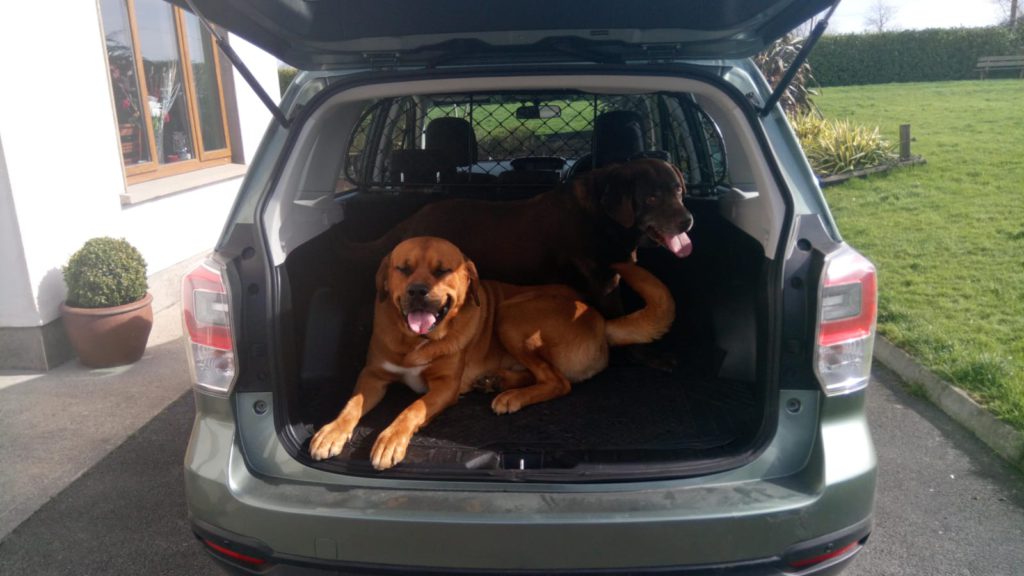
Hachi is a young dog so he is full of health and vitality as he is only four years old wheras Bruno is an older dog of thirteen years and has some health problems.
He has arthritis in his back legs which means he finds it difficult to walk.
This means that he cant exercise much so he is inclined to put on weight.That is very common for old labradors and also he likes his grub so Brendan and myself are a bit worried he could get type 2 diabetes so we are trying to cut down on his food and take him for small walks down the road as far as our next door neighbour’s David and Grainne.
Bruno exhibits none of the following symptoms yet Thank God!
These symptoms should be investigated as they could be indicators that your dog has diabetes:
1.Change in appetite
Your pet might grow hungrier over time because high blood sugar levels(hyperglycemia) and ketones in the urine.
If your pet has low blood sugar levels(hypoglycemia)they also are hungrier and they need some form of carbohydrate to feel better.
For example Pedigree dog nuts which my dog Bruno loves more than the cheaper priced dog nuts.
2.Excessive thirst/Increased Urination
These two signs are an indication of a diabetic condition, so you’ll want to watch closely for them, especially as your pet ages.
Unfortunately, increased thirst and urine output are also signs of other serious health problems, so regardless of the age or condition of your dog or cat, you should make an appointment with your veterinarian (and bring a urine sample) if you notice these symptoms.
3.Weight loss
High blood sugar levels(Hyperglycemia) cause significant weight loss because there is not enough insulin to break down the glucose in the body’s blood which causes the sugar levels to rise because of the fat being burned instead of carbohydrate.
When your pet’s body are being starved of essential nutrients, the result is often an increase in appetite. When the energy from food is not being used efficiently your pet can lose weight even though he’s taking in more calories.
4.Unusually sweet-smelling or fruity breath
Diabetic Ketoacidosis (DKA)can be a complication of untreated diabetes and may cause bad breath. DKA comes from the increasing number of ketones in the blood that inevitably results in a strong acetone odor coming from your animal’s mouth.
5.Lethargy
You’re pet has no energy and an increased need for sleep. When your pet’s body is deprived of insulin there is too much glucose in the body and the pets blood sugar levels are very high and that causes fat to be burned off instead of carbohydrate and it’s carbohydrate that gives your pet energy .The pet is then apt to show a general lack of desire to run, go for a walk, or engage in play.
6.Diabetic dog shaking and trembling
When your diabetic dog displays the symptoms of weak legs, trembling, shivering, sleepiness,disorientation and slow reactions,it means that the dog is hypoglycemic.(low blood sugar)
This happens because you injected too much insulin or your dog didn’t eat its entire ration. In this case you have to check his /her blood sugar levels with a glucometer and provide your dog with carbohydrate rich food such as pedigree dog nuts. If the symptoms do not resolve contact your vet without delay, hypoglycemia is a very dangerous condition.
7.Urinary tract infections
It’s not at all uncommon for diabetic dogs and cats to acquire urinary tract infections. This happens because the more sugar there is in the urine, the greater the likelihood that bacteria will grow in your pet’s bladder.
High blood sugar levels causes fat to be burned off instead of carbohydrate,this results in more sugar in the urine.
The more sugar in the urine the more likely you are to get urinary tract infections.
8.Vomiting/refusing to eat
When your dog refuses to eat and/or vomits these are important symptoms of canine diabetes. This lets you know that your dog has Diabetic Ketoacidosis (DKA), which is one of the most dangerous complication of diabetes. You should check your pet’s blood sugar level with a glucometer and if the blood sugar level is high inject the pet with insulin.
If this does not work contact your vet immediately.
9.Diabetic Retinopathy, blindness
Another symptom of diabetes in companion animals is blindness, which is seen primarily in dogs, but cats can also develop blindness as a result of diabetic retinopathy.
10.Chronic skin infections
A diabetic dog may have skin problems. It’s coat may be affected, it becomes dull, rough and dry.
11.Seizures
Seizures and coma are signs that your diabetic dog is very hypoglycemic.(low blood sugar). These are very severe symptoms that require you to feed your dog at once with a sugary treat or a with a high carbohydrate snack (for example honey or maple syrup being put on the gums if the dog cannot eat). Then call your vet or an emergency veterinary service immediately.
12.Diarrhea
If your dog has diarrhea change his/her’s diet to a healthy dog friendly diet such as good quality dog nuts such as pedigree dog nuts.
If you have any information,questions, or feedback you would like to include in this post.
Please email momo19@diabetessupportsite.com or leave your comments below.